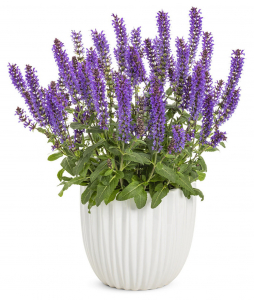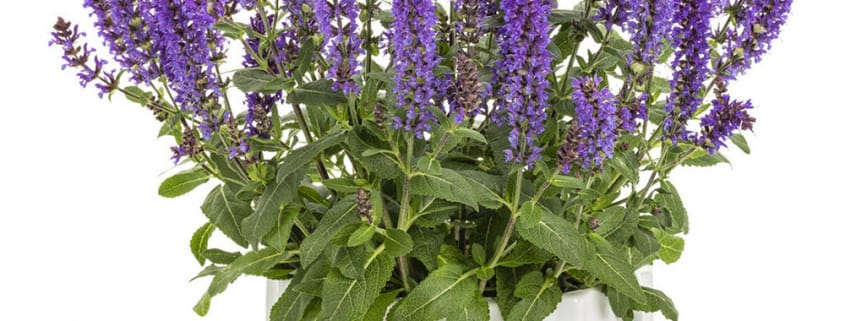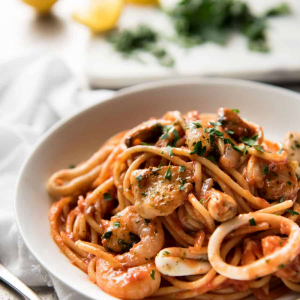Favourites
Keith Mundy

Gardeners will always tell you they have certain favourites in the plant world, and nurserymen, although spoilt for choice, will also have a group of plants that appeal to them. Without a doubt, some of my favourites are salvias, with their extraordinary diversity of colour and habit—over 1800 species alone, without new varieties that are added almost all the time. Already this year there have been several new varieties released, and they are truly a gardener’s delight, providing rich and interesting rewards for every garden.
This spellbinding genus has blues to rival the colours of the ocean and sky, as well as rich reds, pinks, yellow, and white, along with every combination of these dominant colours. Their diversity in leaf colour and shape is second to none, from those that feel like velvet, to long and narrow in varying colours. Many varieties are used for culinary purposes, having delightful scents that can be used to flavour food of all kinds.
Most salvia species are adaptable to an extensive range of soil types, from clay to open and sandy. Where soils might need improvement, it makes sense to add organic matter like animal manure or compost. Good drainage, however, is generally advisable, and without it there is greater risk of less-hardy varieties not surviving a long, wet winter. In gardens where soil is wet for long periods, it is advisable to slightly raise the planting area to allow better drainage.
When preparing to plant salvia, refrain from adding excess nitrogen to soil, as it will give lush foliage at the expense of flowers. Soil acidity or alkalinity play no great part in the placement of the plants, although many of the species are derived from locations where limestone is dominant. Nearly all varieties prefer a full sun position, except for those that grow in and tolerate shade. From time to time throughout the year, salvia ‘Yamagata’ becomes available, and should be sought out from nurseries.
Some taller varieties have a brittle branching habit and should be planted in a location free of strong winds. Many of the lower-growing forms are excellent in a seaside garden. Like all perennials, salvias should be pruned on a regular basis to keep the plant in a compact form, and to promote several periods of flowering throughout the year. They are generally pest- and disease-free, with aphids and powdery mildew being a problem in the summer months. They are great to grow in a container for those who have difficult locations, or to brighten up paving where other plants might have failed. Due to their ability to handle periods of dryness, they are an ideal pot plant.
Often overlooked these days are the extensive range of annual forms available to brighten up the flower garden, where seasonal change is required. Colours of reds, white, blues, and purple are available, and should be planted at the rear of the garden. Low-growing annuals like petunia, marigold, lobelia, and other summer flowering annuals are a great companion planting to salvia.
Check out your local nursery for the exciting range of salvia, both perennial and annual, that are now available, and brighten up your garden with these rewarding plants.

